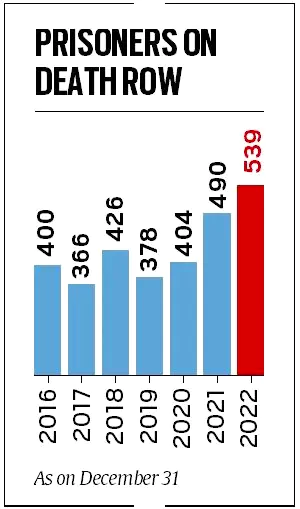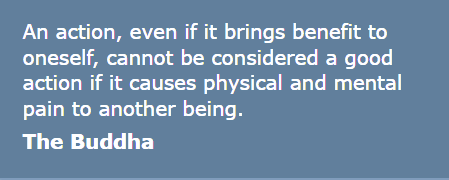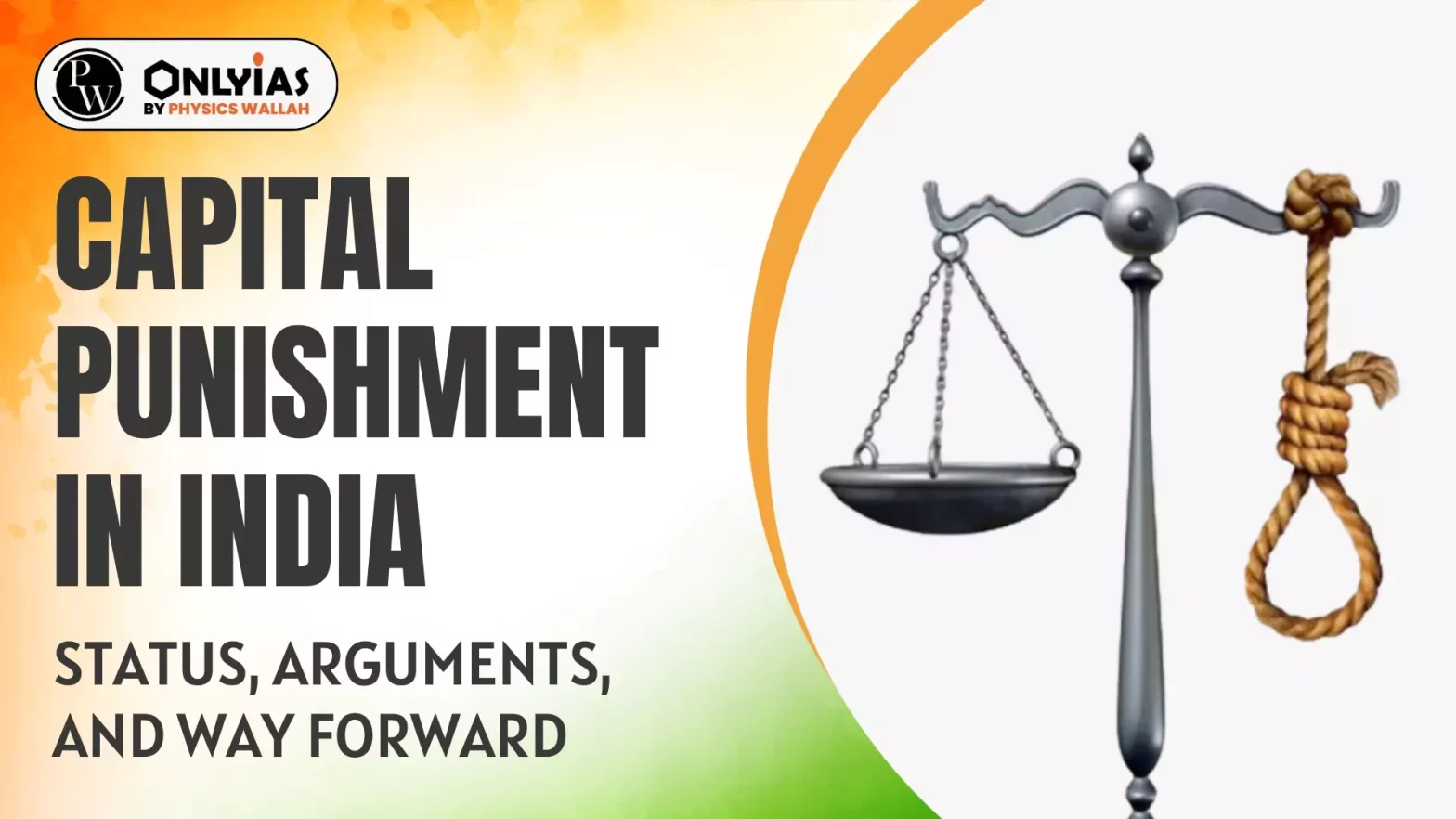Context:
This article is based on the news “Death by nitrogen: Why this Alabama execution is polarising” which was published in the Indian Express. In Alabama, USA a convict has been executed using nitrogen hypoxia for the first time as a method of capital punishment.
About Nitrogen Hypoxia:
- In Nitrogen hypoxia, high concentration of nitrogen replaces oxygen which disables the respiratory system of a person causing the ultimate death of the person.
How Does It Work?
- Nitrogen hypoxia forces the person to breathe only nitrogen, depriving him or her of the oxygen needed to maintain bodily functions.
- In this method of execution, a respirator mask is placed over the inmate’s face, and pure nitrogen is pumped into the person’s lungs instead of oxygen.
|
What is Capital Punishment?
- About: Capital Punishment is defined as a death penalty ordered by the state owing to the commission of a Crime. Crimes that can result in the death penalty are known as capital crimes or capital offences.
- Purpose of Capital Punishment: The prime reason behind capital punishment is its efficacy in deterring identical or similar crimes.
Status of Capital Punishment Across World
- 36 countries worldwide practise it, and 103 countries have completely abolished it for all crimes.
- European Union: Article 2 of the Charter of Fundamental Rights of the European Union prohibits the use of capital punishment.
- Council of Europe: It has 47 member states, and also prohibits the use of the death penalty by its members.
- UN General Assembly Resolution: In 2007, 2008, 2010, 2012, and 2014, the UN General Assembly passed non-binding resolutions advocating for an international moratorium on executions to ultimately abolish them.
- Although many nations have abolished capital punishment, China, India, the United States and Indonesia, continue to apply the death penalty (although in India and in many US states it is rarely employed).
- Each of these four nations has consistently voted against the General Assembly resolutions.
Capital Punishment in India: Status

- Death Penalty in India: According to the ‘Death Penalty in India: Annual Statistics 2022’ report released by Project 39A, the Supreme Court awarded the death penalty to only seven people from 2007 to 2022.
- All death sentences were either set aside or commuted to life in 2023, as they did not fall under the “rarest of rare cases”.
- Capital punishment by Trial Courts: Trial courts awarded 165 death sentences in 2022, the highest in over two decades.
- 98.3% of the death penalty cases were decided by trial courts “without any materials on mitigating circumstances of the accused and without any state-led evidence on the question of reform.
Provisions For Capital Punishment in India
- Statutory Provision: The Air Force Act, of 1950, The Army Act, of 1950, and The Navy Act, 1957 provide punishment for offences, including hanging or death by shooting.
Supreme Court Judgement on Capital Punishment in India
- Jagmohan Singh v. State of Uttar Pradesh (1972): The constitutional validity of the death penalty was upheld by the SC.
- Rajender Prasad v. State of Uttar Pradesh: The court held that the death penalty directly affects the life of the people guaranteed under Article 21 of the Constitution. To impose death penalty, the two things are required:
- The special reasons should be recorded for imposing the death penalty in a case.
- The death penalty must be imposed only in extraordinary circumstances.
- Bachan Singh vs State of Punjab (1980): In this case, the SC upheld the death penalty, but limited it to the ‘rarest of rare cases’.
- It upheld the Rule of Law which holds that the death sentence is only legal if it serves as an alternative to life in prison.
- It strengthens the policy that life imprisonment is the rule and death punishment is an exception.
- Deena Dayal vs Union of India And Others (1983): It upheld the capital punishment by ruling that hanging is “as painless as possible” and “causes no greater pain than any other known method”.
Arguments in Favour of Capital Punishment in India

- Retribution: According to this theory, real justice requires people to suffer for their wrongdoing, and to suffer in a way appropriate for the crime.
- Death sentence is seen as just retribution for murderers, providing closure for victime’s family and society.
- Utilitarianism: Utilitarian theory propounded by Jeremy Bentham aims at welfare-maximising actions and conveys that the consequential welfare of the society outweighs the deprivation of life of the criminal.
- Deterrence: It has been argued that it gives victims’ families satisfaction and serves as a deterrence to potential offenders, preventing them from committing these extremely horrible crimes again.
- Public Safety: The public has to be safeguarded against the possibility of release of a murderer which may cause further crimes.
- Least Humane Method: The government argues that hanging should remain legal because it is the least common method of execution that goes wrong, in addition to not being harsh or inhumane.
Arguments Against Capital Punishment in India
- Violation of Right to Life: The death penalty also violates the fundamental right to life guaranteed by the Indian Constitution.
- The Indian Constitution, under Article 21, states that no person shall be deprived of his “Right to Life” unless done with due process.
- When the death penalty is imposed, it also restricts the scope of introducing fresh evidence or legal rules into the case.
- Methods of Penalty: According to the Indian Constitution, state-sanctioned executions have to be as comfortable and painless as possible but there is no easy method available for this.
- The most popular technique, lethal injection, has been involved in controversy due to unsuccessful executions.
- Ex- One Oklahoma prisoner experienced an apparent heart attack forty-three minutes following the initial injection in 2014.
- Poor Deterrence Effect: There is no proof that the death penalty serves as any kind of deterrence.
- Social scientists had shown the death penalty had no deterrent effect; and that public opinion worldwide was in favour of its abolition.
Buddhism and Capital Punishment
- In terms of doctrine, the death penalty is inconsistent with Buddhist teaching.
- Buddhists place great emphasis on non-violence and compassion for all life.
- The First Precept requires individuals to abstain from injuring or killing any living creature.
- The Buddha did not explicitly speak about capital punishment, but his teachings show no sympathy for physical punishment, no matter how bad the crime.
|
- Discriminatory: The death penalty is discriminatory. It is often used against the most vulnerable in society, including the poor, ethnic and religious minorities, and people with mental disabilities.
- The death penalty Report of India clearly shows that around 76% of convicts of Death Penalty belonged to lower and backward castes contravening the philosophy of ethics and morality.
- Additionally 93.5% sentenced to death penalty for crimes of terror belong to Scheduled Castes or religious minorities.
- Scope for Reform: Life imprisonment offers a chance for rehabilitation, whereas the death penalty limits any opportunity for redemption.
- The sanctity of life and the dignity of death are held in high moral regard, and capital punishment is widely condemned as a grave violation of human rights.
- Execution of Innocent: Utilitarian theory and its “goal oriented” may lead to wrongful executions, especially in cases of terrorism where unfair trials and coerced confessions are common.
- In some cases, special or military courts set up through counterterrorism laws have sentenced civilians to death, undermining international standards.
Way forward

- Life Imprisonment as an Alternative: The Bharatiya Nyaya Sanhita, 2023 has defined ‘life imprisonment’ as a term for the remainder of one’s natural life, and this should be the default alternative to death sentences.
- Option for Remission: Remission should be a humanitarian act and never a source of political controversy.
- Removing capital punishment from the statute book and introducing a rational and universal remission policy will be a substantive reform in the justice system.
- The case for the abolition of the death penalty in India will gain strength if the trend of seeking the premature release of life convicts on political grounds is arrested and life terms without remission become more common.
- Rehabilitation: The reason behind commission of crime may in a lot of cases be the deeply rooted “Psychosocial maladjustment”. The correction of this maladjustment must be made the prime goal to deter repeat offences.
- Rehabilitation has its theoretical base in the belief that unfavourable social conditions are the reason behind commission of crime. Therefore, it is the moral right of the convict to seek the help of society.
- Law Commission Recommendation: As recommended by the Law Commission report, death penalty should be abolished , except in certain cases where the accused is convicted in terror related offence.
![]() 29 Jan 2024
29 Jan 2024




